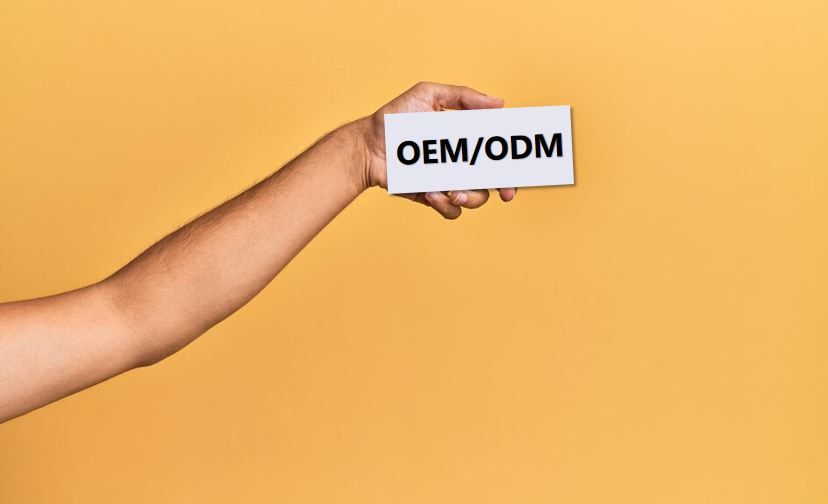If you're looking to develop your own product or start a private label brand, you’ve probably come across the terms OEM and ODM. These two models are commonly used in manufacturing partnerships—especially in countries like China—and play a major role in shaping how your product is designed, developed, and brought to market.
But what do OEM and ODM actually mean? Which one is right for your business? And how do they impact your brand, costs, and long-term growth?
In this guide, we’ll break down the key definitions, differences, pros and cons, and how to choose between OEM and ODM based on your unique needs.
What Does OEM Stand For?
OEM stands for Original Equipment Manufacturer. In this model, you—the buyer—are responsible for product design and specifications. The factory produces the product based on your detailed instructions, often including custom molds, materials, and branding.
Key Characteristics of OEM:
You provide the product design, CAD files, or engineering drawings.
The factory manufactures the product according to your specifications.
Your brand is placed on the final product.
You retain control over intellectual property and customization.
Example:
You design a stainless steel water bottle with a unique shape and logo. You hire a factory to produce it exactly to your design—this is an OEM arrangement.
OEM is suitable for:
Businesses with their own R&D or product development team
Brands focused on long-term uniqueness and IP ownership
Companies aiming to launch a proprietary product line
What Does ODM Stand For?
ODM stands for Original Design Manufacturer. In this case, the factory already has a ready-made product design, and you simply rebrand or make minor adjustments to sell it under your own brand.
Key Characteristics of ODM:
The factory owns the original product design.
You may customize aspects like color, packaging, or small features.
Faster production and lower upfront investment.
Limited product uniqueness unless further customized.
Example:
You find a wireless Bluetooth earbud design from a supplier. You change the color and packaging, and sell it with your own brand—this is ODM.
ODM is suitable for:
Startups or small brands testing new markets
Companies that want to launch quickly with minimal R&D
Sellers seeking lower product development costs
OEM vs ODM: Key Definitions and Differences
| Feature |
OEM |
ODM |
| Design Ownership |
Buyer (you) |
Manufacturer |
| Development Timeline |
Longer (full design & tooling required) |
Shorter (ready-made or semi-customized) |
| Upfront Investment |
Higher (molds, design, testing) |
Lower |
| Product Differentiation |
High (unique design, exclusive) |
Moderate (may share with other brands) |
| Best For |
Established brands, IP holders |
New brands, market testers |
Pros and Cons of OEM: Is It Right for Your Business?
Advantages
Full control over product design and branding
Strong IP protection and exclusivity
Supports long-term brand development and market positioning
Disadvantages
Higher development costs (design, molds, certifications)
Longer lead times before mass production
Requires technical input or experienced product teams
Pros and Cons of ODM: Is It Right for Your Business?
Advantages
Fast to market—great for testing new ideas
Lower startup and design costs
Factories often have proven production experience
Disadvantages
Less product uniqueness (others may sell similar products)
Lower IP ownership or exclusivity
Harder to build a strong brand identity with generic products
How to Choose Between OEM and ODM for Your Product
Making the right decision comes down to your business model, goals, and resources.
Choose OEM if:
You have a unique product idea or patented design
You want long-term control and brand differentiation
You’re ready to invest in development and tooling
Choose ODM if:
You want to launch quickly and test the market
You have a limited budget or limited technical capacity
You prefer a lightweight operation with fewer upfront risks
A Partner That Understands Both: Market Union
If you're unsure whether OEM or ODM is right for your product, working with an experienced sourcing agency like Market Union can help.
With access to a vast network of factories across China and deep experience in both OEM and ODM projects, Market Union provides:
- Supplier recommendations tailored to your needs
- Hands-on support for product development and modifications
- Factory audits, sample coordination, and quality control
- End-to-end service—from sourcing to shipping
Whether you’re launching a private label, scaling an existing product line, or entering a new market, Market Union simplifies the process and ensures you're matched with the right manufacturers for your project.
FAQ: OEM and ODM Explained
Q1: Can one factory offer both OEM and ODM services?
Yes. Many factories in China provide both OEM and ODM options depending on the buyer’s requirements. A good sourcing agent can help you assess which model fits your situation.
Q2: Is OEM more expensive than ODM?
Typically, yes. OEM involves upfront investment in design, molds, and testing. However, it delivers long-term value through product uniqueness and IP protection.
Q3: Do I need a sourcing agent for OEM/ODM?
While not mandatory, it’s highly recommended. A sourcing agent ensures you choose reliable suppliers, manage timelines, avoid communication issues, and handle logistics efficiently.
Q4: Can I start with ODM and move to OEM later?
Absolutely. Many brands begin with ODM to test the market and transition to OEM once they validate product demand and are ready to invest in full customization.
Q5: Which is cheaper—OEM or ODM?
ODM is generally cheaper because the manufacturer already has the product design and tooling in place. OEM costs more upfront but gives you greater control and long-term value.
Q6: Who owns the intellectual property (IP) in OEM/ODM?
In OEM, the buyer typically owns the IP. In ODM, the factory usually owns the design unless you negotiate otherwise (always confirm in writing).
Q7: Are there hybrid models between OEM and ODM?
Yes. Some manufacturers offer "semi-OEM" or customized ODM, where you can modify features like color, logo, and packaging without doing a full redesign.
If you have any further questions about OEM or ODM—or need help deciding which model is right for you—feel free to reach out. We’d be happy to assist!
 Women Activewear
Women Activewear
 Men Activewear
Men Activewear
 Men Outdoor Apparel
Men Outdoor Apparel
 Women Outdoor Apparel
Women Outdoor Apparel
 Team Sports
Team Sports
 Sports Shaper & Sports Safety
Sports Shaper & Sports Safety
 Camping & Hiking
Camping & Hiking
 Boxing Fighting & Dance Gymnastics
Boxing Fighting & Dance Gymnastics
 Game Room & Backyard
Game Room & Backyard
 Swimming & Beach
Swimming & Beach
 Sports & Outdoor Accessories
Sports & Outdoor Accessories
 Cycling
Cycling
 Winter Sports
Winter Sports
 Racquet Sports
Racquet Sports
 Water Sports
Water Sports
 Hunting
Hunting
 Fitness
Fitness
 Fishing
Fishing












































